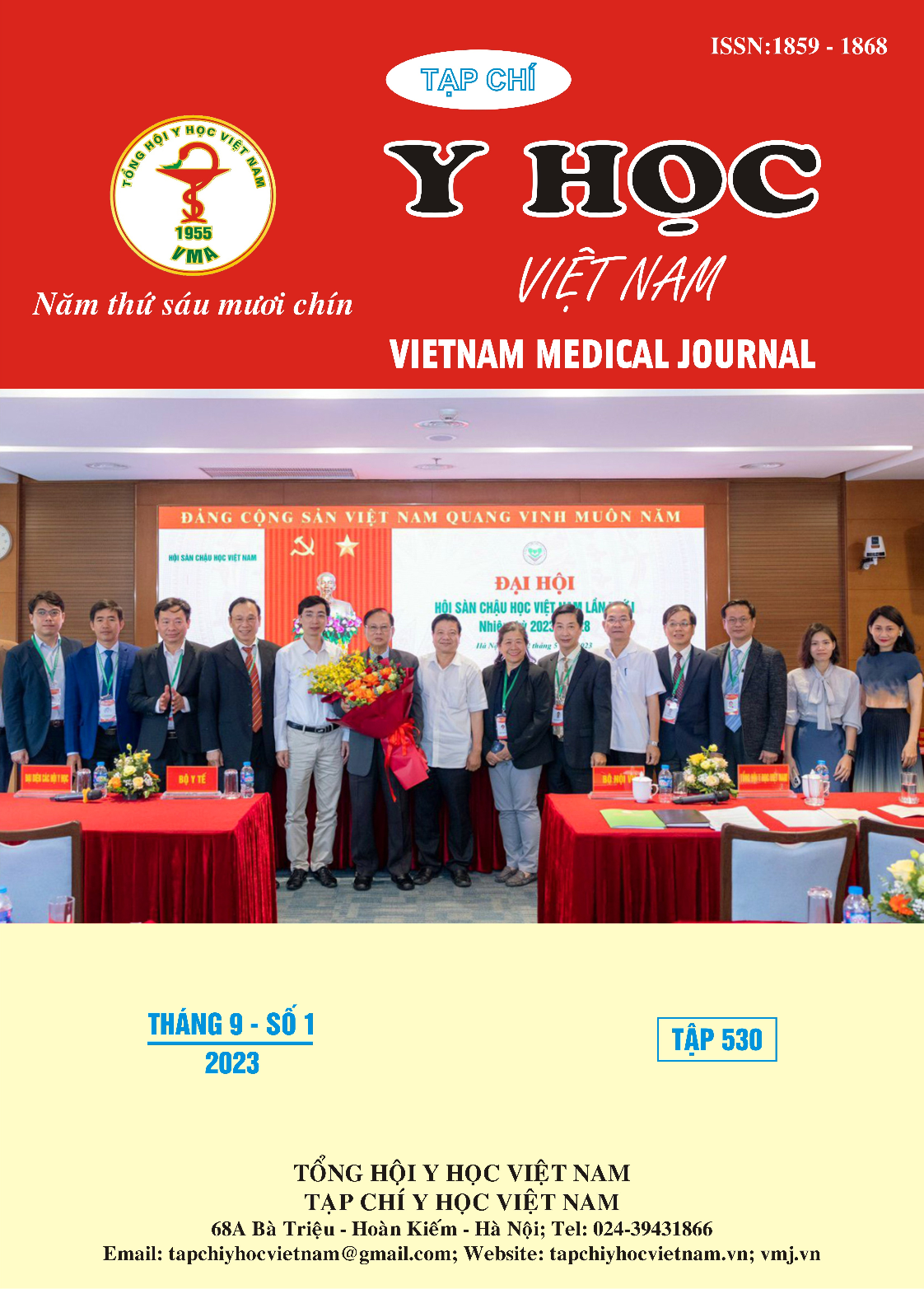ĐÁNH GIÁ VÁCH NGĂN XOANG BƯỚM VÀ Ý NGHĨA LÂM SÀNG TRÊN CHỤP CẮT LỚP VI TÍNH ĐA DÃY Ở BỆNH NHÂN TRƯỚC PHẪU THUẬT NỘI SOI XOANG
Nội dung chính của bài viết
Tóm tắt
Mục đích: Đánh giá vách ngăn của xoang bướm và mối liên quan giữa số lượng và vị trí của vách ngăn và động mạch cảnh trong trên chụp cắt lớp vi tính đa dãy (MSCT) xoang ở bệnh nhân trước phẫu thuật nội soi (PTNS) xoang tai Bệnh viện Đại học Y Hà nội. Đối tượng và phương pháp nghiên cứu: Nghiên cứu hồi cứu mô tả cắt ngang phân tích các xoang cạnh mũi trên 149 bệnh nhân (75 nữ, 74 nam) trước PTNS xoang, được chụp MSCT xoang không tiêm thuốc cản quang tĩnh mạch nhằm đánh giá vách ngăn của xoang bướm và mối liên quan giữa số lượng và vị trí của vách ngăn và động mạch cảnh trong. Quy trình chụp MSCT từ xoang trán đến hết xoang bướm với các lớp mỏng 0.625mm, tái tạo theo mặt phẳng coronal vuông góc với khẩu cái cứng và axial song song với khẩu cái cứng. Vách ngăn xoang bướm được chia làm 3 nhóm: nhóm I, không có vách ngăn, nhóm II có 01 vách ngăn và nhóm III có > 1 vách ngăn. Riêng nhóm II lại được chia thành các nhóm nhỏ, nhóm IIa có 01 vách ngăn nằm ở vị trí trung tâm, nhóm IIb có 01 vách ngăn nằm ở vị trí lệch phải so với mào gà và nhóm IIc có 01 vách ngăn nằm ở vị trí lệch trái so với mào gà. Kết quả: Tuổi trung bình của nhóm bệnh nhân là 46.6±15, tuổi thấp nhất là 8, cao nhất là 77. Trong số 149 bệnh nhân, có 1 BN (chiếm 0.7%) xoang bướm không có vách ngăn (nhóm I). Có 52/149 BN (chiếm 34.9%) xoang bướm có 01 vách ngăn ở chính giữa (nhóm IIa), có 30 BN (chiếm 20.1%) xoang bướm có 01 vách ngăn lệch phải so với mào gà (nhóm IIb), có 41 BN (chiếm 27.5%) xoang bướm có 01 vách ngăn lệch trái so với mào gà (nhóm IIc) và 25 BN (chiếm 16.8%) xoang bướm có >01 vách ngăn. Không có sự khác biệt có ý nghĩa thống kê về tuổi hoặc giới tính đối với mỗi loại vách ngăn xoang bướm. Kết luận Vách ngăn xoang bướm cần phải được đánh giá đầy đủ trên MSCT các xoang cạnh mũi trước khi phẫu thuật để tránh các biến chứng tiềm ẩn do các thay đổi về mặt giải phẫu trong PTNS xoang.
Chi tiết bài viết
Từ khóa
xoang cạnh mũi sau, chụp cắt lớp vi tính đa dãy, vách ngăn xoang bướm.
Tài liệu tham khảo
2. Cashman EC, McMahon PJ, Smyth D. Computed tomography scans of paranasal sinuses before functional endoscopic sinus surgery. World J Radiol. 2011; 3(8): 199-204.
3. Unlu A, Meco C, Ugur HC, Comert A, Ozdemir M, Elhan A. Endoscopic Anatomy of Sphenoid Sinus for Pituitary Surgery. Clinical Anatomy. 2008; 21:627–632.
4. Kölln KA, Senior BA. Conventional and Endoscopic Approaches to the Pituitary. In: Rhinology and Facial Plastic Surgery. Stucker FJ. De Souza C. Kenyon GS. Lian TS. Draf WS. (Eds.): Springer-Verlag Berlin Heidelberg, 2009; 485-490.
5. Casiano RR. Anterior skull base resection. In: Endoscopic sinus surgery manual. Marel Dekker Inc, New York, 2002.
6. Idowu OE, Balogun BO, Okoli CA. Dimensions, septation, and pattern of pneumatization of the sphenoidal sinus. Folia Morphol. 2009; 68(4):228-232.
8. Abdullah BJ, Arasaratnam S, Kumar G, Gopala K. The sphenoid sinuses: computed tomography assessment of septation, relationship to the internal carotid arteries, and sidewall thickness in the Malaysian population. J HK Coll Radiol. 2001; 4:185-188.
9. Couldwell WT. Transsphenoidal and transcranial surgery for pituitary adenomas. J Neurooncol 2004; 69 (1-3): 237-256.
10. Delano MC, Fun FY, Zinrich SJ. Relationship of the optic nerve to the posterior paranasal sinuses. Am J Neuroradiol. 1996; 17:669-675.


